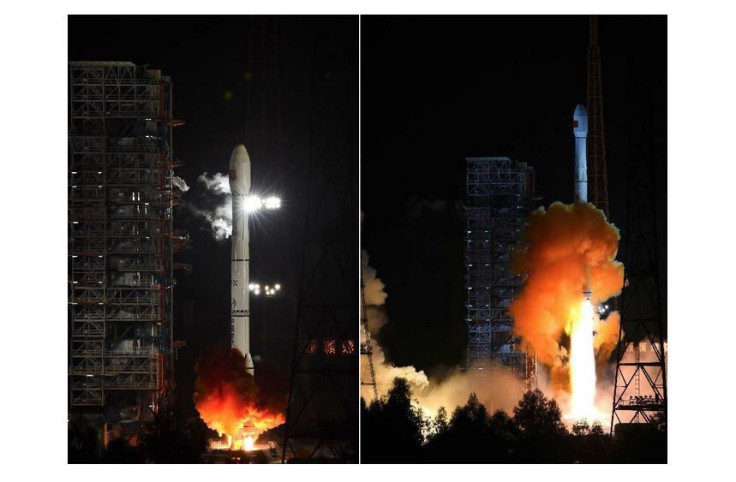China Launches First Spacecraft To Fly Around Moon And Back To Earth

China on Friday launched an experimental spacecraft that will orbit the moon, and in a first for the country's space program, return to Earth. The effort is expected to prepare the country for an ambitious future lunar mission to send astronauts to the moon.
After reaching the lunar atmosphere, the unmanned spacecraft will fly around the moon and return to Earth. The module will be 256,626 miles from Earth at its farthest point on the eight-day mission, according to the State Administration of Science, Technology and Industry for National Defence, or SASTIND.
The spacecraft, which is part of a test run for a 2017 mission aimed at sending a manned Chinese probe to return with lunar samples, blasted off from the Xichang satellite launch center in the southwestern province of Sichuan. According to experts, it will be China’s first lunar module to return to Earth at a speed of about 7 miles per second. The spacecraft is scheduled to land in northern China's Inner Mongolia region.
“The mission requires that the rocket sends the spacecraft to a fixed spot in space. Any inaccuracy will mean that the spacecraft will fail to enter the moon's orbit,” Xinhua quoted Jiang Jie, a rocket expert, as saying to China Central Television.
As part of its lunar exploration program, named Chang'e after a mythical goddess of the moon, China has already conducted extensive unmanned explorations of the moon.
Chang’e-1 in 2007 followed by Chang’e-2 in 2010 orbited the moon and mapped its surface through remote sensing. Chang’e-3 landed on the moon on Dec. 14 2013 to become the first spacecraft to soft-land on the moon since the Soviet Union's Luna 24 in 1976. However, none of those missions was programmed to return to Earth.
The Chang’e-5 probe, which will be launched in 2017, is expected to be much more complicated than previous missions and the country's space agency reportedly will have to test technological challenges such as taking off from the moon's surface, docking in lunar orbit and withstanding high temperatures during re-entry into Earth’s atmosphere.
© Copyright IBTimes 2024. All rights reserved.












